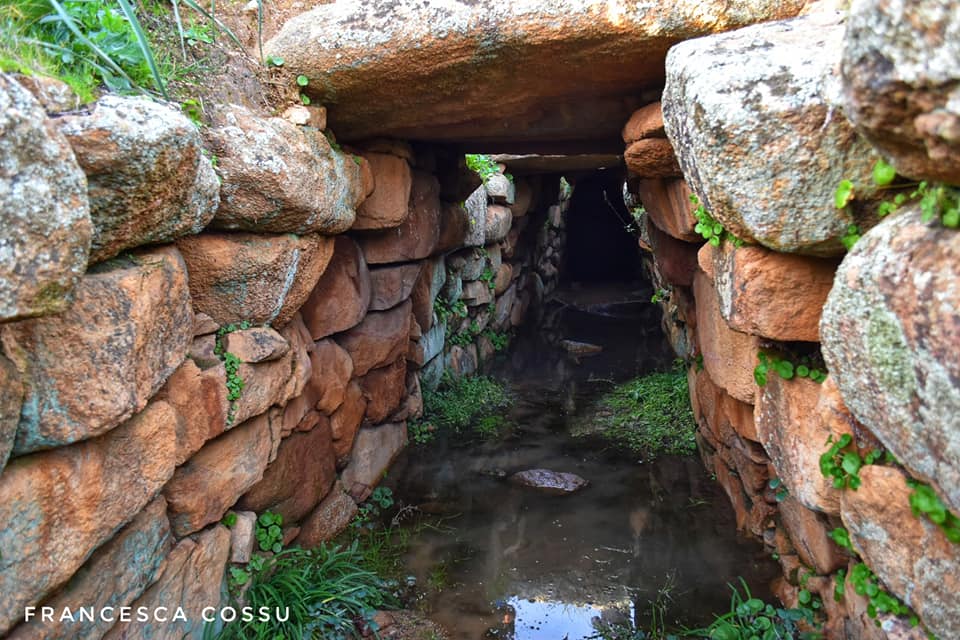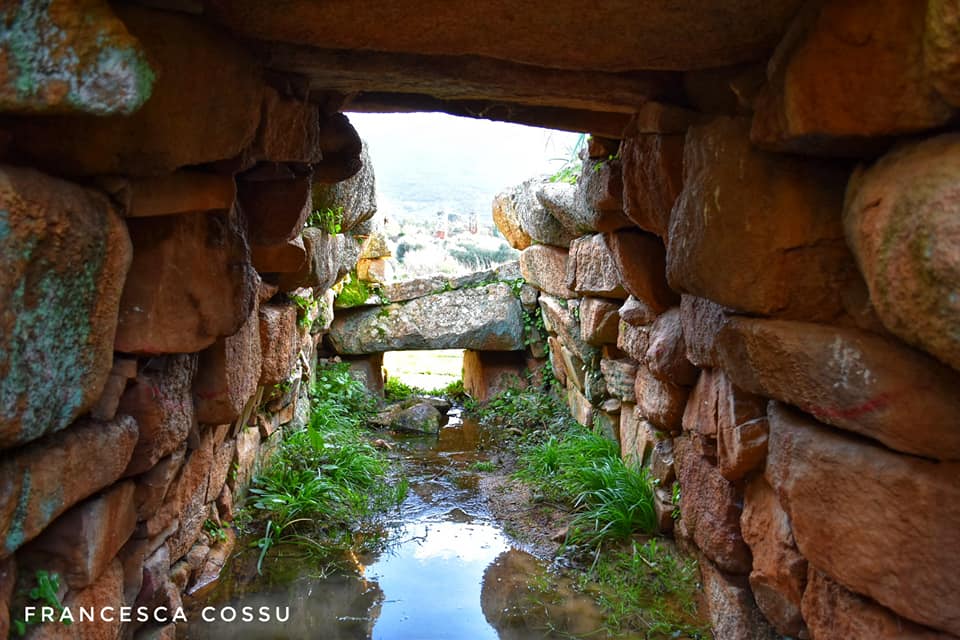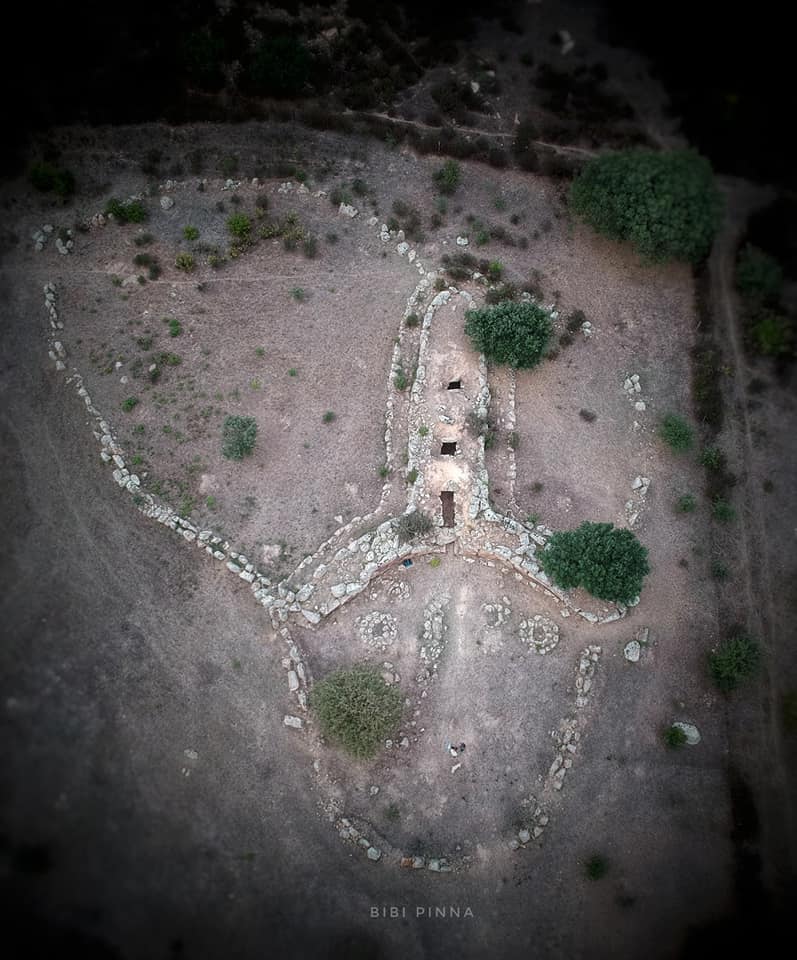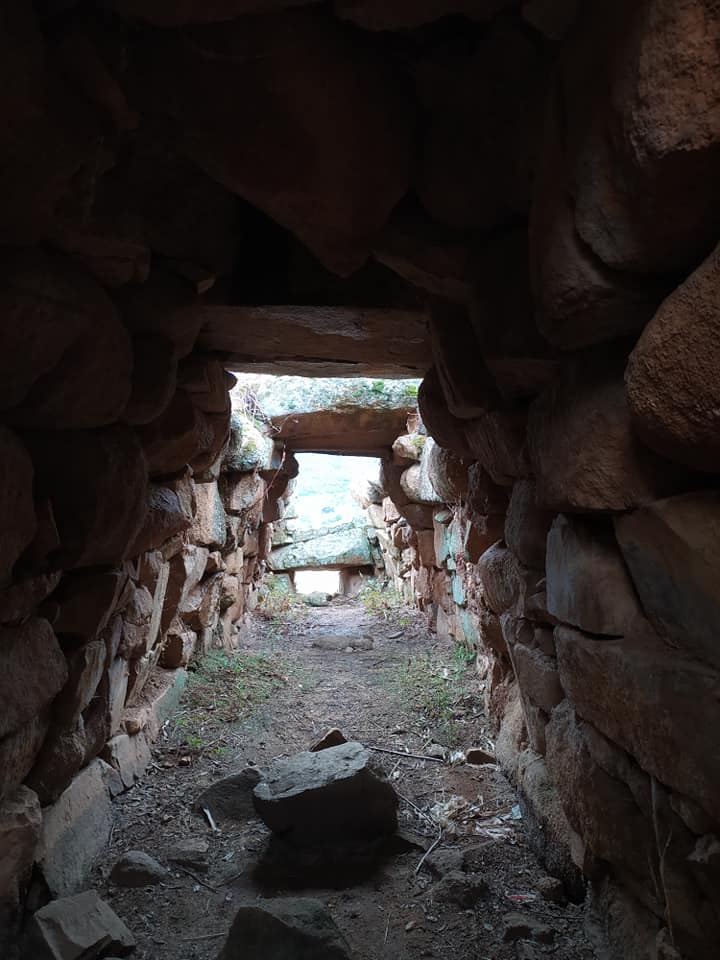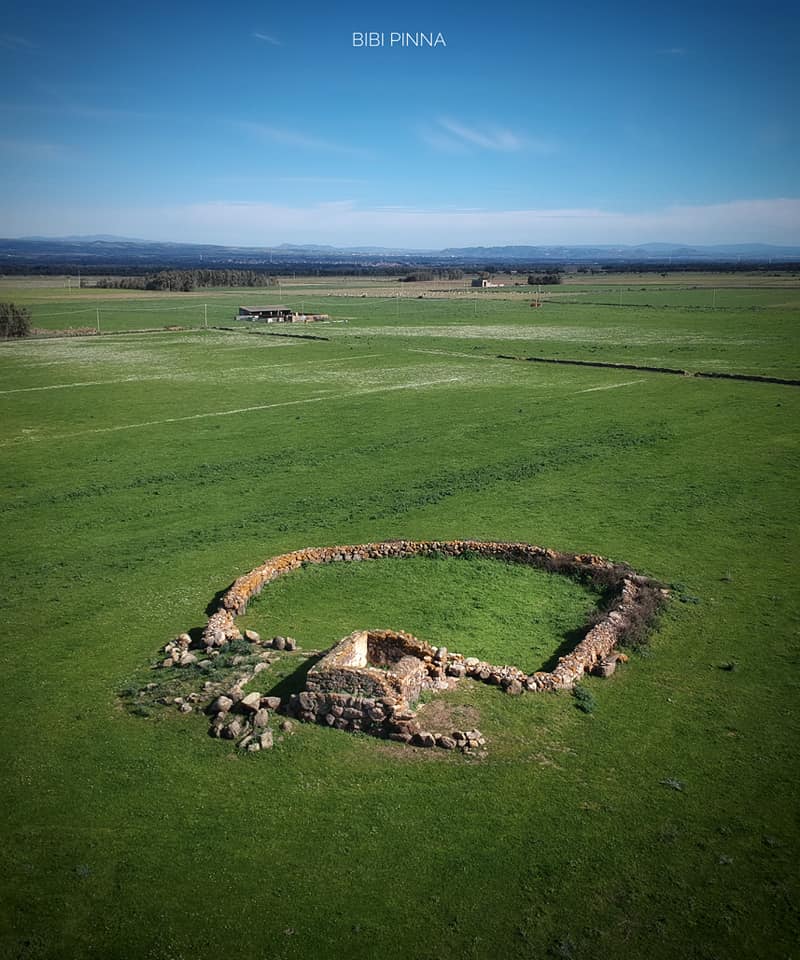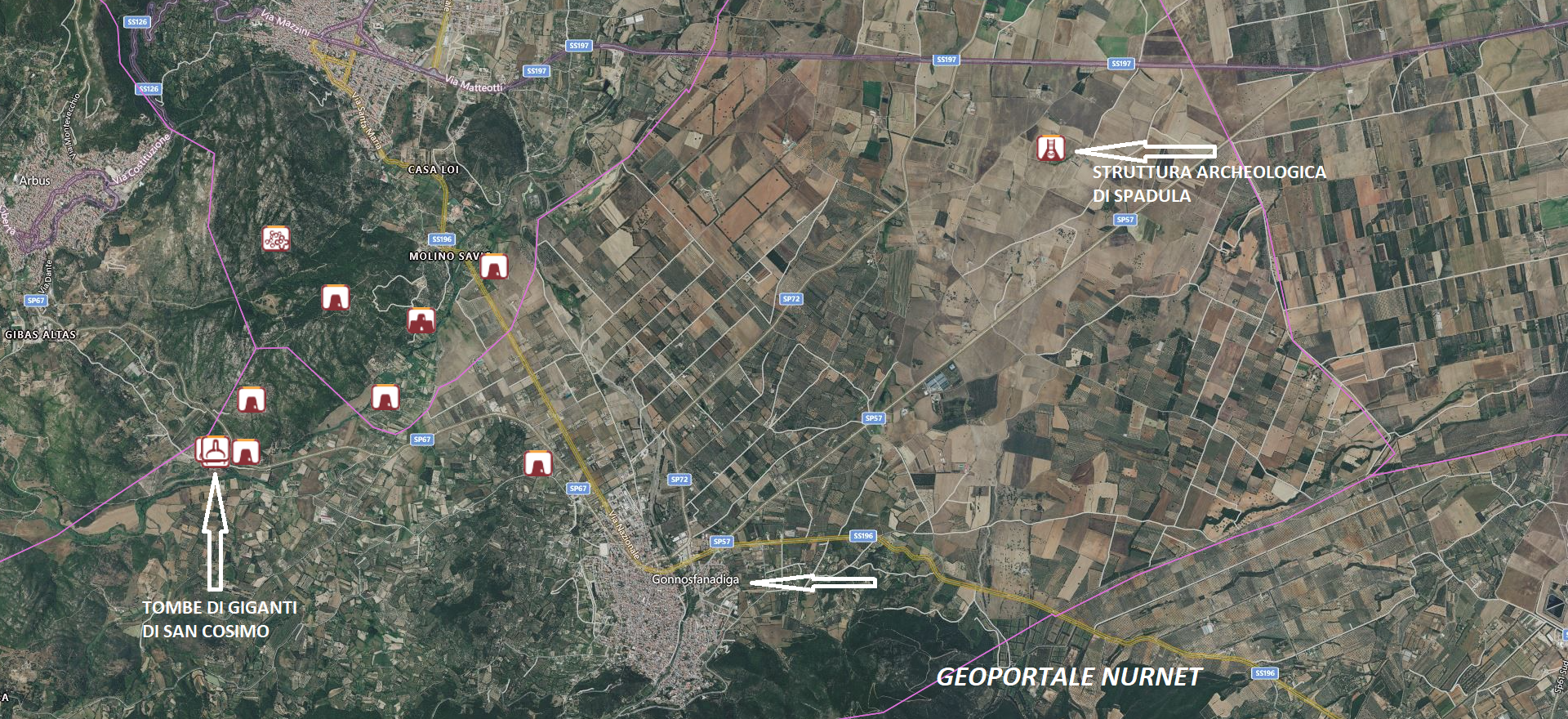24b: The tomb of giants of San Cosimo, in Gonnosfanadiga, also known asIt seems that your message is incomplete. Please provide the text you would like me to translate.The Cave of Saint John, “It was considered by the ‘father’ of Sardinian archaeology Giovanni Lilliu…the largest Giants’ tomb known up to that time: it is thirty meters long and its exedra is 26 wide. It was built from granite, sourced from the surrounding area. Based on the finds recovered inside and around it, the dating of the monument has been placed between the 15th and 14th centuries B.C., during the Middle Bronze Age. The façade is typical of the Giants’ tombs in central-southern Sardinia, characterized by rows and an architraved entrance lacking a stele. Along the outer perimeter, there are stones piled at the base, forming a step: this solution served two purposes, to make the structure more solid and to prevent rainwater infiltration. A small corridor leads to the actual chamber, which is rectangular in shape and has a truncated-ogival section. The original floor, surviving only in a few places, consisted of a covering of smoothed stones of various sizes and pebbles, laid over a natural granite rock shelf.” (Sardegna Turismo)
Near this Giants’ tomb, there are remains of two other tombs of the same name.
The archaeological structure of Spadula, also located in the territory of Gonnosfanadiga, is likely of Nuragic age and features straight wall traces that outline a rectangular shape oriented along the North-South longitudinal axis. It seems plausible that stones removed from the ancient building were used for the subsequent constructions of the enclosure and the small hut, which due to its shape and evident characteristics at first glance, resembles a megaron temple.
The photos of the Giants’ tomb of San Cosimo, in Gonnosfanadiga, are by Lucia Corda, Bibi Pinna, Antonello Gregorini, Francesca Cossu, and Alberto Valdès. Those of the archaeological structure of Spadula, also in Gonnosfanadiga, are by Bibi Pinna.




